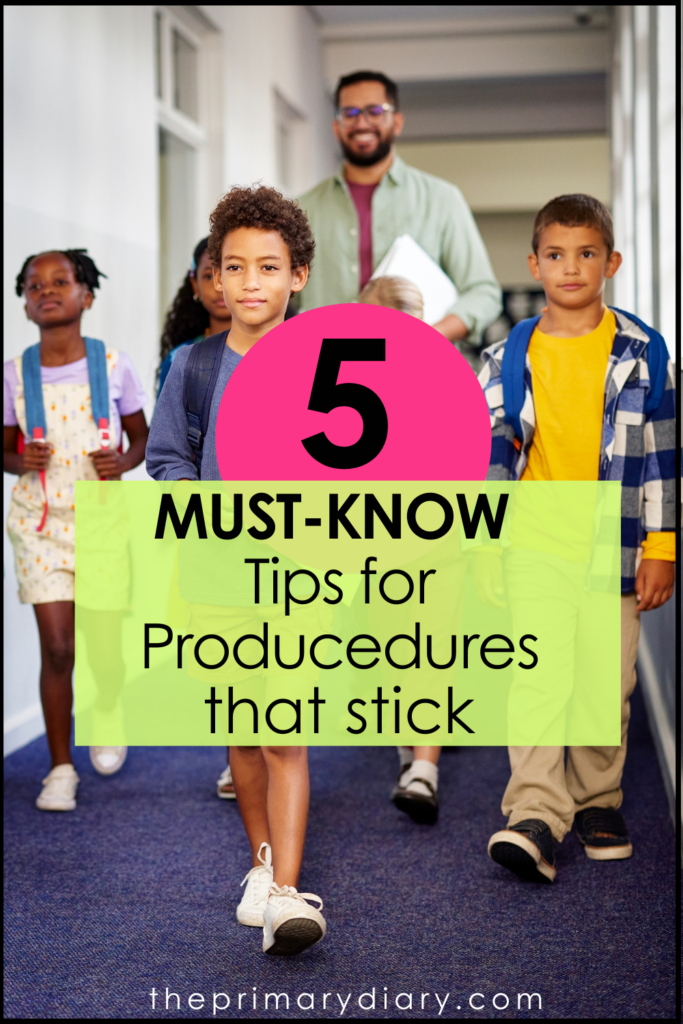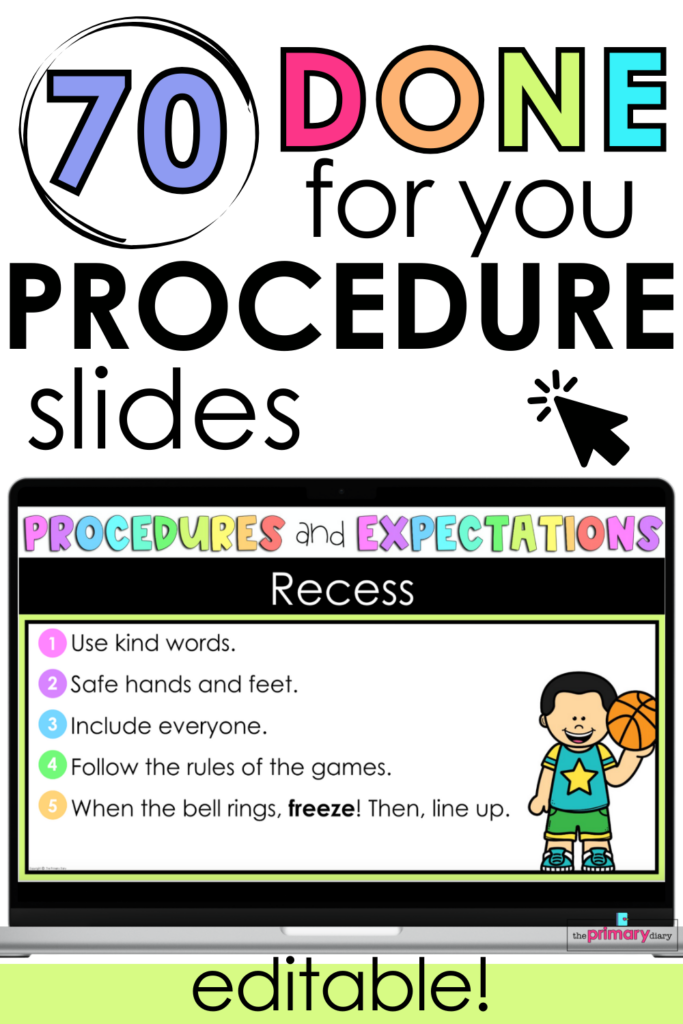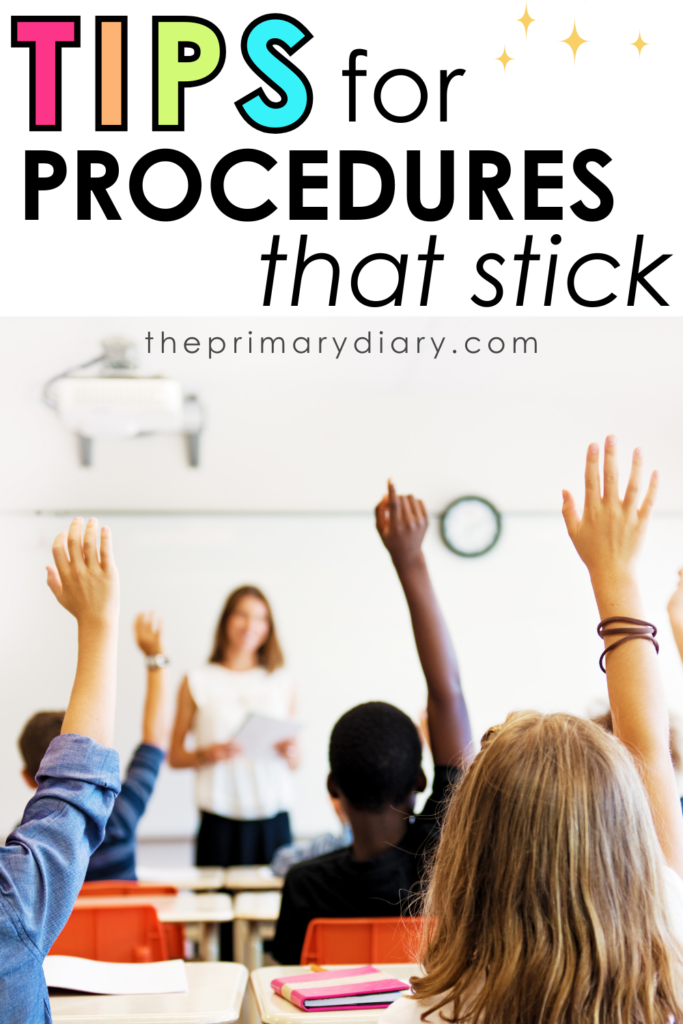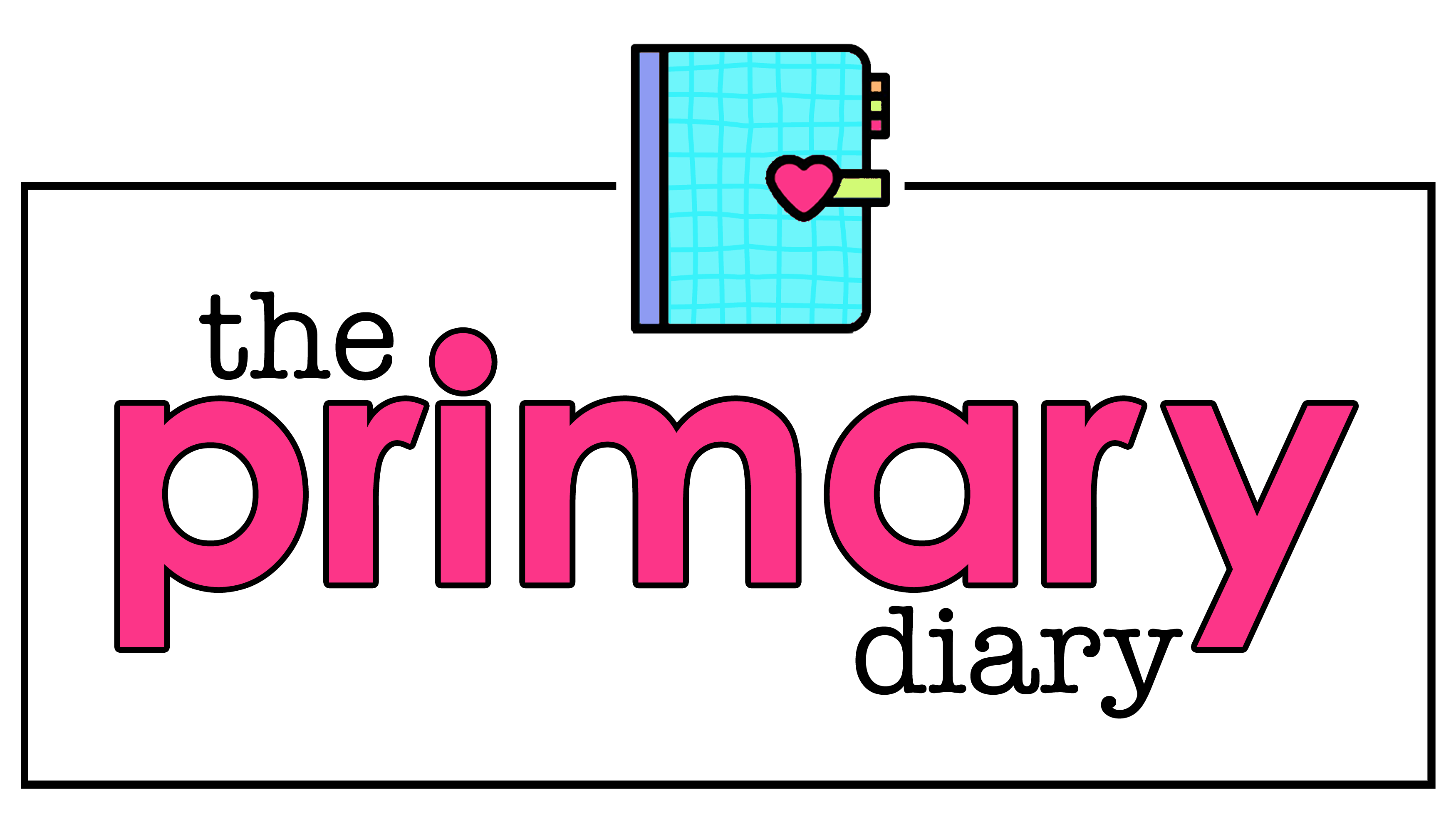5 Must-Know Tips for Elementary Classroom Procedures That Stick

Let’s face it—classroom routines are the backbone of a smooth-running school day. From how students enter the room to what they do after they finish an activity, elementary classroom procedures help maintain order, ensure expectations are clear, and set students up for success. But here’s the thing: Establishing these procedures can feel overwhelming at the start of the school year, especially when you’re already juggling so much. That’s why having simple, effective procedures in place from the get-go is so important!
With a little planning, you can make classroom routines work like magic. I’m here to share five must-know tips that will help your procedures and routines stick—so you can focus more on teaching and less on managing behavior!
1. Entering the Classroom Procedure
Focus on this procedure first!! The way students enter the classroom can make or break your day! If you don’t have a clear procedure for this important part of the day, things can quickly get out of hand. A well-established entry routine helps students settle into their work right away, without distractions.
When students walk in, have morning slides projected onto the screen so they know exactly what to do next. Whether it’s getting their supplies ready or beginning an independent task, students will be able to jump into action immediately, which makes your day run more smoothly.
Tip: Know what you want students to do before you teach the procedure. Do you want them to grab their materials first before sitting down? Do you want them to greet their partner when they first walk in? Imagine step-by-step what you want to students to do. Then, communicate this clearly so that students can meet your expectations.
Not sure what you want students to do? These premade slides have every procedure you can think of! Plus, they are completely editable.

👉 Want ready-to-go slides to make your morning routine easier? Grab them here!
Elementary Classroom Procedures and Routines
2. Model, Model, Model!
When you introduce a new elementary classroom procedure, the most important thing you can do is model it. But here’s the twist—modeling isn’t just showing them what to do. It’s about giving them a chance to actively observe and replicate what you’re doing step by step.
Here’s how to use interactive modeling for teaching procedures:
- Ask students to observe silently as you demonstrate the procedure.
- Once you’re done, ask them, “What did I do?” Let them name exactly what you did, step by step. “You walked with your hands by your side” or “You started your work right away.”
- After that, call one student up to replicate what you just modeled.
- Then, have a small group practice together, and finally, bring the whole class in to try it out.
- Be sure to give lots of positive praise when they follow the procedure correctly!
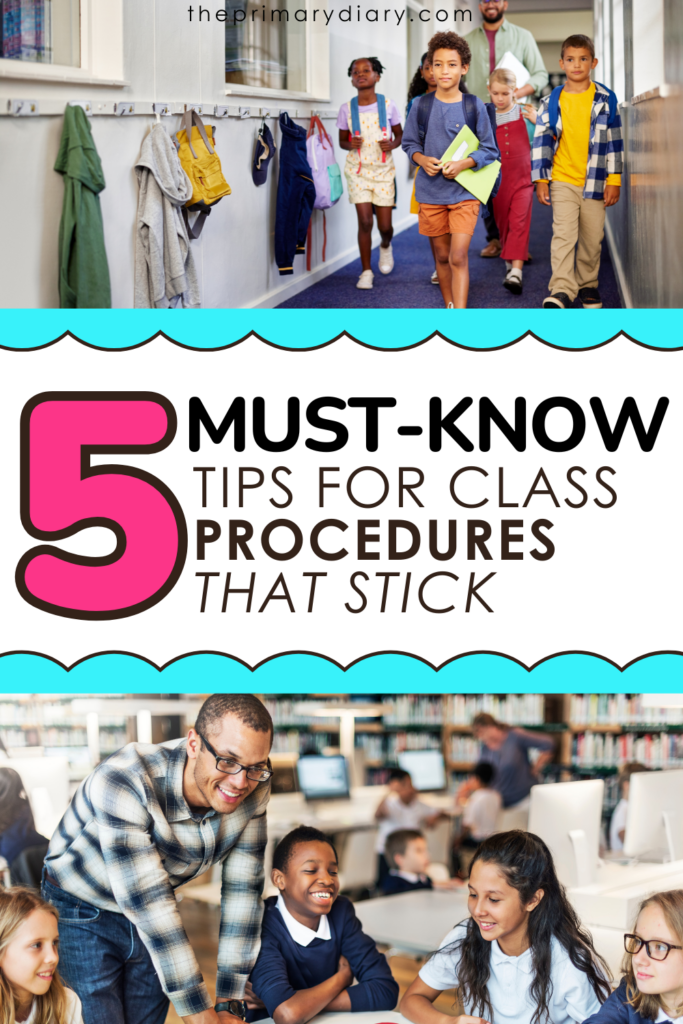
3. Incorporate Visuals and Reminders for Routines and Procedures
Visual reminders are a game-changer when it comes to helping students remember procedures. Whether it’s a chart on the wall or a digital slide on the projector, visuals help solidify what’s expected in a fun, interactive way.
Tip: Post elementary classroom procedures in strategic spots around the room, like by the door, on the whiteboard, or at the front of the room. If you’re teaching a specific routine, display a visual aid so students can refer to it easily throughout the day.
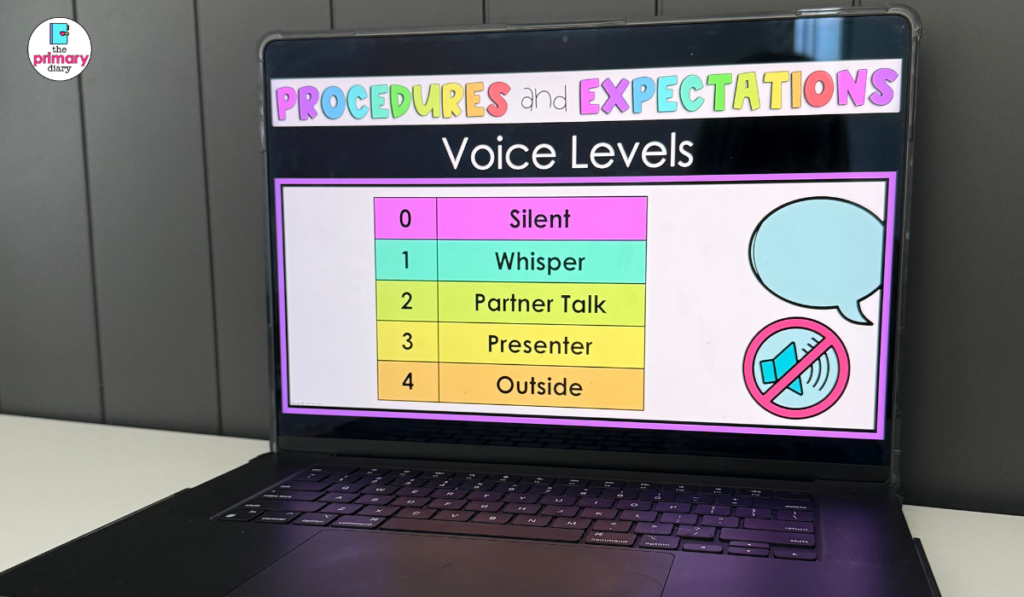
👉 Get your classroom procedure slides ready with these pre-made slides here!
4. Have Students Reflect on Routines and Evaluate Themselves
After practicing procedures, it’s important to give students a chance to reflect on how things went. Reflection helps them internalize the expectations and lets them see where they can improve.
After a procedure, ask your students how they think it went. Here’s my favorite way to have students reflect. First, ask for a silent thumbs up, thumbs middle, or thumbs down. Next, call on a few silent thumbs to explain their reasoning. This gives students ownership over the procedure and can help identify any areas that need more practice.

5. Don’t Be Afraid to Stop and Practice Procedures
If a procedure isn’t going as planned, don’t be afraid to hit pause on your lesson and practice it again. Sometimes, you just need to slow down to speed up! Giving students the chance to practice a procedure when it’s not going well can save you time and frustration in the long run.
Tip: If you notice a procedure isn’t clicking, take a moment to reset. This could mean practicing how to transition between activities or walking through what to do during independent work time. It’s always better to spend a little extra time getting it right upfront!
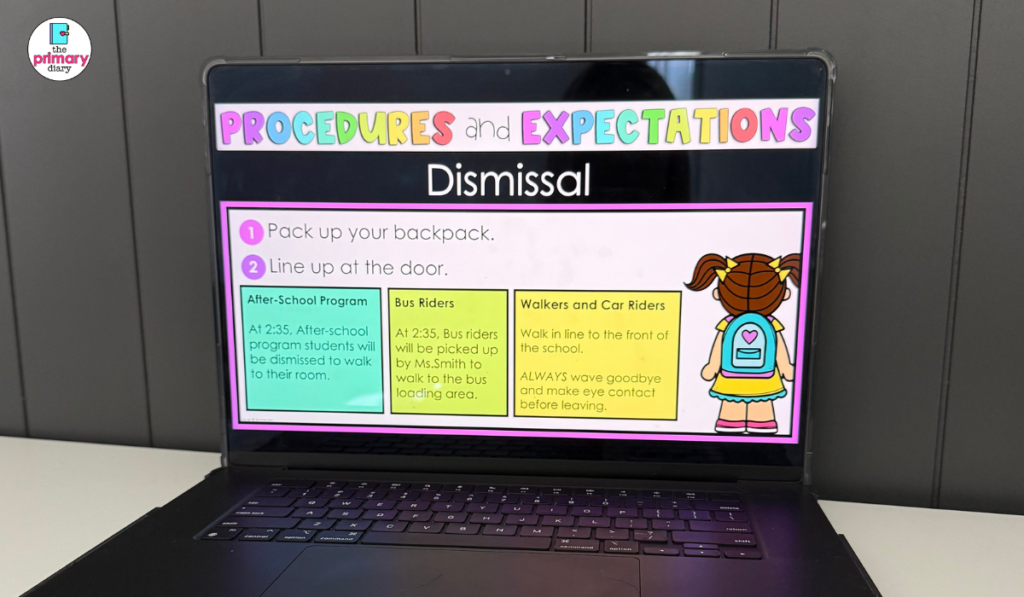
Final Thoughts
Elementary classroom procedures may seem like a lot of work at first, but they’re totally worth it! With clear routines, your classroom will run more smoothly, students will feel more confident, and you’ll have more time to focus on teaching and less time managing chaos.
Don’t forget—entering the classroom procedure is one of the most important parts of setting up your day. Make it clear, practice it consistently, and you’ll see the positive impact right away.
P.S. – Are you an elementary math teacher? Find out must-know tips on The Primary Diary Blog.
